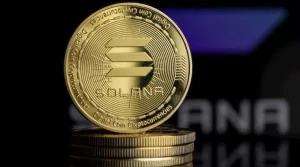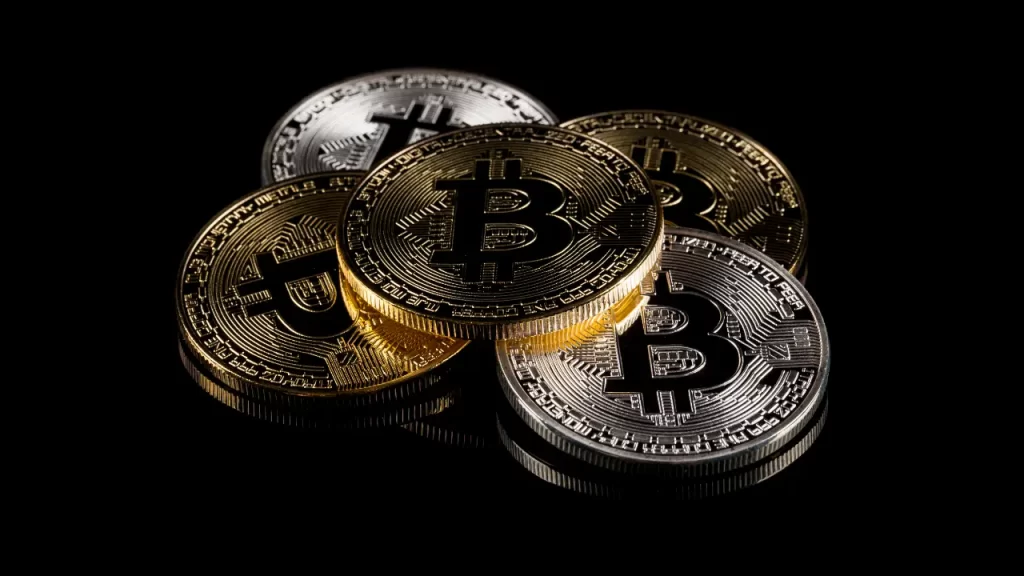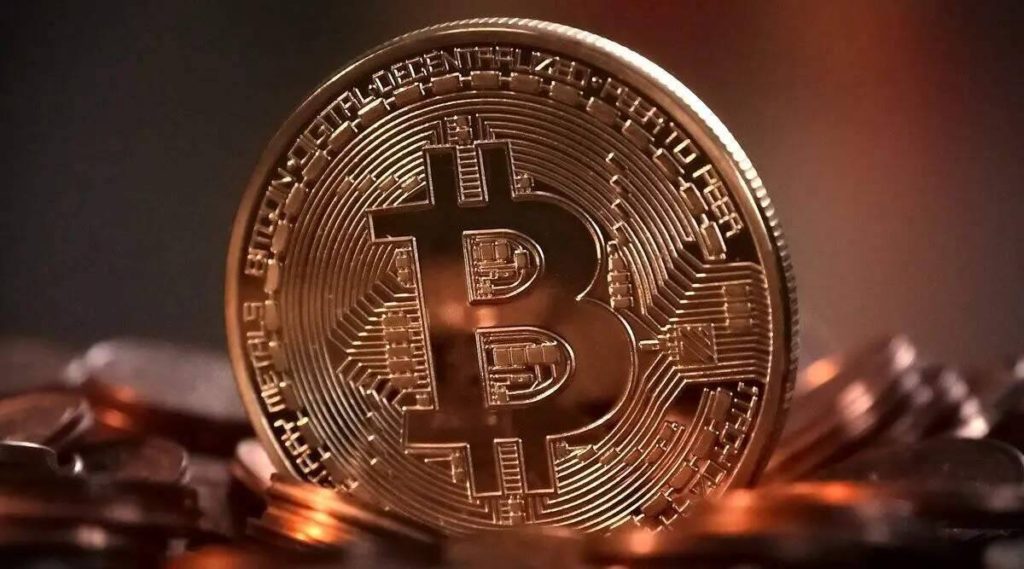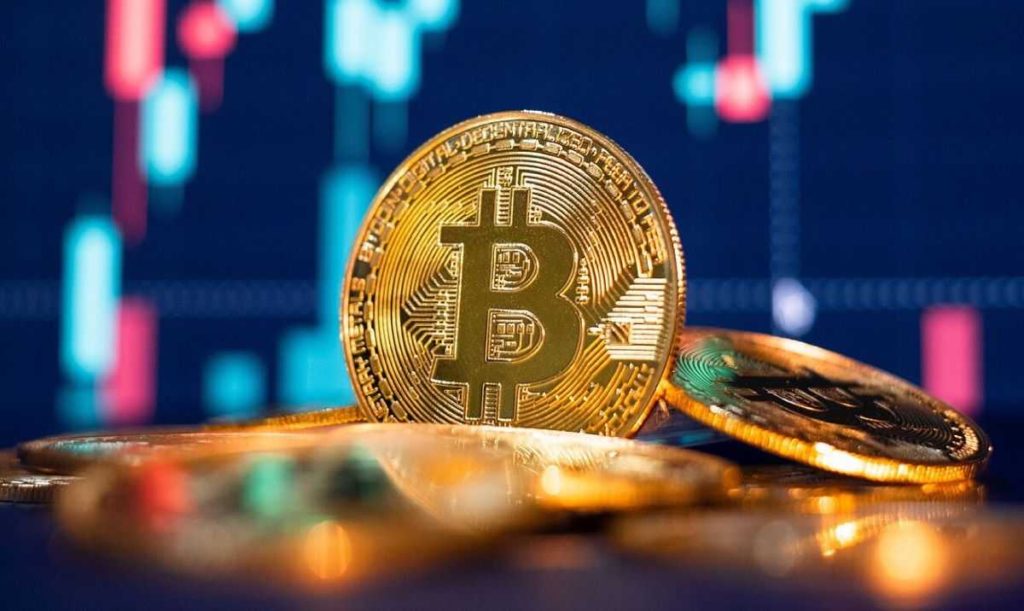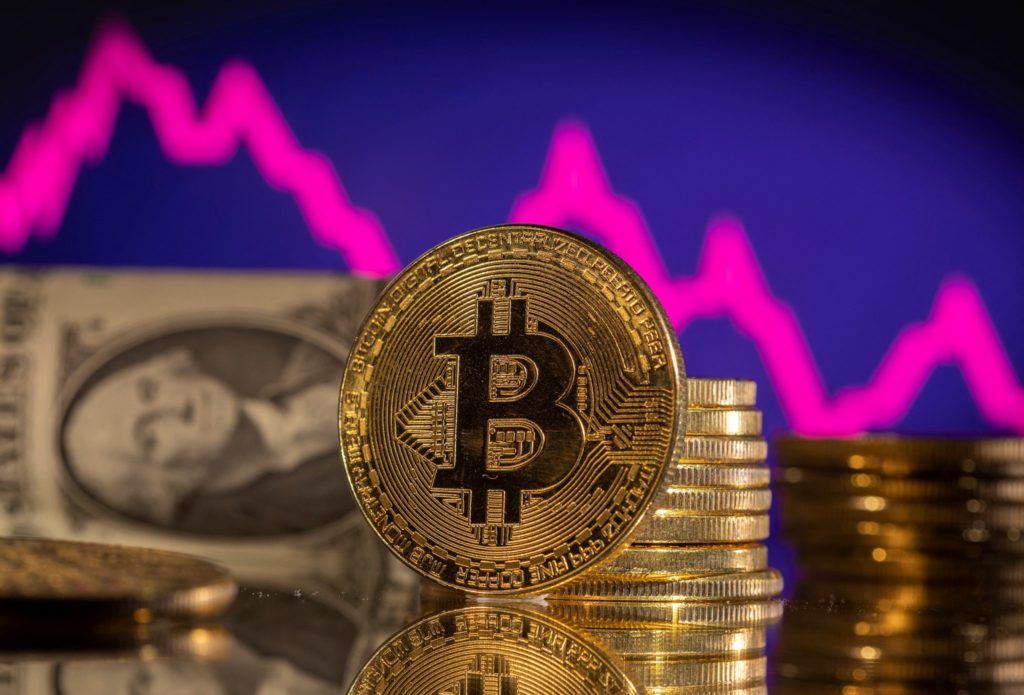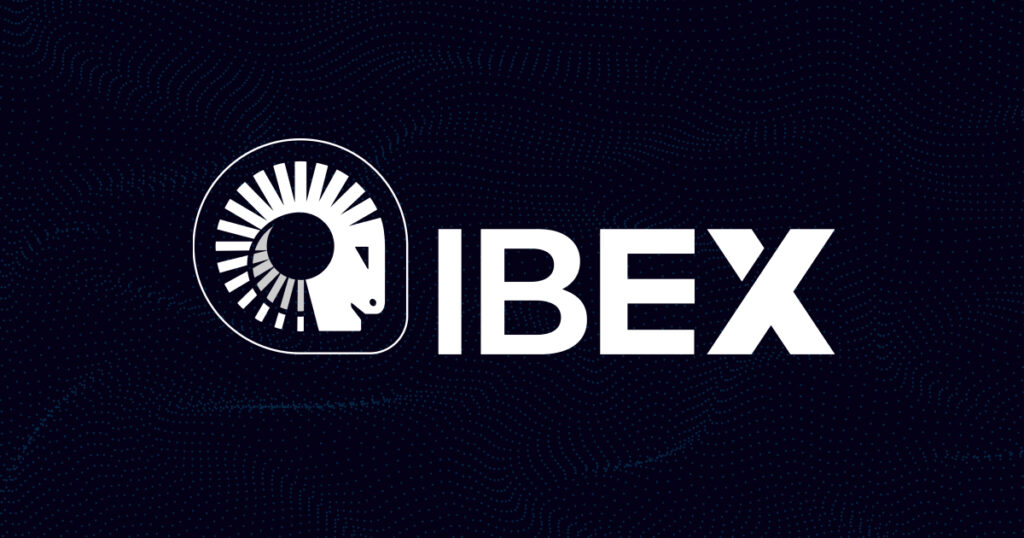The price of Bitcoin hovered around $30,500 as the Wall Street market opened this week, with bullish investors finding newfound support.
Data from Cointelegraph Markets Pro and TradingView indicated that the price of BTC remained stable at $30,000 during the weekly close.
At the start of the week, the largest cryptocurrency showed stability as the U.S. markets began trading, and there were hopes for a repeat of the previous week’s performance.
The United States played a significant role in driving buyer interest, particularly after several institutional product applications based on the Bitcoin spot price were announced.
According to popular trader Daan Crypto Trades, most of the action and buying pressure occurred during the U.S. stock market open hours.
This sentiment was echoed by fellow trader Skew, who emphasized the importance of the June 26 U.S. trading session.
On-chain analytics firm Glassnode supported this observation, suggesting that the increased interest in Bitcoin could be part of a longer-term trend driven by the filings for U.S.-based exchange-traded funds (ETFs). Its weekly newsletter,
“The Week On-Chain,” highlighted the revival of U.S.-led demand after a period of weaker relative demand in 2023, with Asian exchanges experiencing the strongest accumulation year to date.
Regarding BTC’s price performance, trading suite DecenTrader identified a significant resistance level above the current price.
This level was represented by the two-year moving average (MA) at slightly above $32,800. Historical data indicated that the area below the two-year MA had provided a favorable opportunity for accumulation before the subsequent halving cycle.
Shorter timeframes also showed a lack of interest in shorting BTC at current levels, which increased expectations for a resumption of the upward trend.
Traders and analysts remained optimistic about Bitcoin’s overall strength, with potential retracements expected to be shallow.
Rekt Capital, a trader and analyst, stated that when a BTC correction ends convincingly, it is highly unlikely that another deep correction would follow immediately.
Any downside movements were more likely to be temporary dips within a new uptrend continuation.
In conclusion, Bitcoin experienced stable trading around $30,500 as the U.S. markets opened on June 26. The U.S. market played a significant role in driving buyer interest, possibly influenced by the recent filings for Bitcoin ETFs.
Analysts and traders expressed optimism about Bitcoin’s price performance, with resistance levels identified and expectations for a shallow retracement before a continuation of the upward trend.
Other Stories:
Bitcoin’s recent surge above $30,000 has sparked renewed interest among traders, potentially leading to increased buying activity in other cryptocurrencies such as Ether (ETH), Arbitrum (ARB), VeChain (VET), and Stacks (STX).
Bitcoin reached a new 52-week high on June 23, indicating a strong bullish trend.
Traders have held onto a significant portion of the gains made during the week, suggesting a reluctance to book profits.
With a 16% increase this week, Bitcoin has outperformed the S&P 500 Index, which experienced a 1.39% decline.
Ether, the second-largest cryptocurrency, is also displaying signs of a potential bullish move. Data from Glassnode reveals a sharp decline in Ether balances on exchanges over the past 30 days, hitting a new low of 12.6%.
A similar dip in Ether exchange balances occurred in November 2022, preceding a substantial rally of 33%.
However, caution is advised this time as the decline in exchange balances may be attributed to actions taken by the U.S. Securities and Exchange Commission against major platforms like Binance and Coinbase.
The cryptocurrency market’s recovery extends beyond Bitcoin and Ether, as several altcoins have experienced significant increases from their recent lows.
This suggests a reduction in bearish sentiment and a growing interest among buyers at lower price levels.
The question remains whether the return of buyers will initiate a new bullish phase in cryptocurrencies or if higher price levels will attract selling from bears.
To gain insights into potential short-term price movements, let’s analyze the charts of the top five cryptocurrencies.
Bitcoin:
Bitcoin has been trading near the $31,000 level for the past four days, indicating a strong defense by bears. However, the presence of bulls is evident, with the 20-day exponential moving average and the relative strength index (RSI) in the overbought zone, favoring the buyers.
If the price sustains above $31,000, the BTC/USDT pair could embark on its next upward move, surpassing the resistance at $32,400 and potentially soaring to $40,000.
Conversely, a break below $29,500 may lead to a slide towards the 20-day EMA, a critical support level, and further down to the 50-day simple moving average.
Ether:
Ether has faced selling pressure near the $1,928 level for three consecutive days, but the bulls have not relinquished their position. The moving averages are on the verge of a bullish crossover, and the RSI remains in positive territory, suggesting bullish control.
If buyers successfully overcome the $1,928 resistance, the ETH/USDT pair could surge towards the $2,148 to $2,200 range. However, a swift downturn below the moving averages could trigger selling from aggressive bulls, resulting in a correction towards strong support at $1,700.
Arbitrum:
Arbitrum witnessed a rally after surpassing the breakdown level of $1, indicating rejection of recent downside movement. Although the bears are attempting to hinder the recovery at the 50-day SMA, the bulls have successfully defended the 20-day EMA, setting the stage for a potential breakout.
A break above $1.18 could mark the beginning of a new upward trend, with targets at $1.28 and $1.54. On the contrary, a downturn below the $1 to $0.90 support zone may negate this bullish view.
VeChain:
VeChain experienced a reversal from the resistance line on June 23, but struggles to sustain prices below the 50-day SMA, indicating buying interest during dips.
Bulls will likely attempt to drive the price above the resistance line, signifying the end of the downtrend and a potential climb towards $0.026.
Other Stories:
Creditor Pledges Tokenized FTX Claim as Collateral for Groundbreaking DeFi Loan
ASX’s Failed Blockchain Upgrade Sparks Blame Game Between Digital Asset and Exchange
Bloomberg senior ETF analyst Eric Balchunas reported that on June 26, the ProShares Bitcoin Strategy ETF witnessed its largest weekly inflow in a year, totaling $65.3 million and pushing its assets past the $1 billion mark.
BITO, which is a Bitcoin futures fund and the first BTC-linked ETF in the United States, has become a favorite among institutional investors.
Balchunas noted that the fund has closely mirrored Bitcoin’s performance, trailing spot prices by just 1.05% annually. Additionally, BITO carries a fee of 0.95%.
According to ProShares, the BITO fund has recorded a gain of 59.6% since the beginning of 2023.
The interest in Bitcoin derivatives has seen a surge across the market following BlackRock’s application for its own Bitcoin ETF on June 15. Deribit, a crypto options exchange, reported a significant increase in Bitcoin futures open interest, which currently stands at $319 million as of June 25, representing a rise of approximately 30% compared to the previous week.
The resurgence in ETF trading and the subsequent boost in BTC prices have also brought positive news for Grayscale, the world’s largest crypto asset manager.
The Grayscale Bitcoin Trust (GBTC), which had been trading at a substantial discount to spot BTC prices for months, is now moving closer to narrowing the gap.
At present, the Grayscale premium, or discount, stands at -31.2%, a significant improvement from its low of -49% in December, according to Coinglass.
Although it remains uncertain whether the Securities and Exchange Commission (SEC) will approve a spot Bitcoin ETF, a race has commenced with a new wave of filings following BlackRock’s application. WisdomTree has filed with the SEC for a spot Bitcoin ETF for the third time, and Invesco has also renewed its application for a similar product.
ETF Store President Nate Geraci has identified a list of ETF issuers that he believes are likely to file or refile for a spot Bitcoin ETF based on their past filings.
Geraci mentioned First Trust, VanEck, Global X, Fidelity, and the potential “dark horse,” Schwab, as issuers to keep an eye on.
The competition to launch a spot Bitcoin ETF is heating up, indicating a growing interest from investors and institutions in gaining exposure to Bitcoin through regulated investment vehicles.
Other Stories:
$PEPE Cryptocurrency Skyrockets Nearly 70% as Crypto Whales Drive Unprecedented Surge
Creditor Pledges Tokenized FTX Claim as Collateral for Groundbreaking DeFi Loan
Credible Crypto, a prominent voice in the cryptocurrency community, predicts Bitcoin’s price may soon surpass its previous high of $69,000, citing patterns in past impulse movements.
The prediction, shared via Twitter, suggests Bitcoin (BTC) could reach this peak within the next four months, potentially by October.
This optimism is based on Bitcoin’s strong performance in recent times, and its successful retest of support on monthly timeframes, implying a potential upcoming “parabolic advance.”
According to Credible Crypto, the trend of parabolic advances is characterized by exponentially increasing momentum that peaks at the top, as previously seen in Bitcoin’s movement from $3,000 to $14,000 and $10,000 to $60,000.
The largest monthly candle seen recently was a $10,000 move that took Bitcoin above the $25,000 level.
Following this trend, the analyst expects a similar magnitude in future monthly moves. The gap between the current price and the prior all-time high, which stands at $40,000, could, therefore, be covered within a few monthly candles.
However, this forecast remains speculative, and the actual timing remains uncertain, even though October has been suggested as a likely timeline.
The analyst clarified that while a new all-time high by the year-end is expected, October was merely a guess.
While many are optimistic about Bitcoin’s potential rise, some remain skeptical about the recent price surge attributed to Bitcoin spot price exchange-traded funds (ETFs) applications by firms like BlackRock.
Regulatory hurdles in the US may impede near-term approvals, a concern voiced by trading firm QCP Capital. Meanwhile, BTC trades around $30,000 as of the latest reports, following a brief period of high volatility.
Other Stories:
ECB Executive Slams Cryptocurrencies as Platforms for Gambling, Calls for Regulatory Safeguards
Sequoia Capital Defends FTX Investment Despite Bankruptcy
Etherscan Launches AI-Powered Code Reader, Polygon Proposes zkEVM Upgrade
Bitcoin mining continues to generate controversy due to its environmental impact, and a recent revelation by a Brooklyn bathhouse has sparked mixed reactions among users on social media.
The bathhouse, located in Brooklyn, New York, announced on Instagram and Twitter that it utilizes Bitcoin mining rigs to heat its spa facilities.
In a post made on June 21, the bathhouse explained its process in three steps: the Bitcoin mining rigs generate heat as a byproduct, the heat is then captured by heat exchangers, and finally, it is circulated to heat the venue’s pools.
Bitcoin mining involves the creation of valid blocks that record transactions on the blockchain, but it consumes a significant amount of energy, often derived from fossil fuels.
This high energy consumption contributes to carbon emissions, raising concerns about the environmental impact of Bitcoin mining.
A report from January 2022 estimated that the Bitcoin mining network emits 42 megatons of carbon dioxide annually, accounting for 0.08% of the world’s total production. Instagram users who follow the Bathhouse account expressed mixed opinions.
Some users, like Annalarranaga, voiced their concerns about who benefits from cryptocurrency mining and called for transparency.
Another user claimed that bathhouse customers preferred “pure, unadulterated heat” for their salt baths, rather than heat generated as a byproduct of mining.
However, some individuals reveled in the negative responses, while others welcomed the idea of using mining-generated heat to warm the pools.
The latter group saw it as an innovative way to reduce energy consumption. Despite the specific example of carbon-neutral Bitcoin mining provided by the bathhouse, concerns about the environmental impact of Bitcoin mining persist among certain individuals, leading to unfavorable reactions.
Interestingly, repurposing the heat generated by Bitcoin mining to save energy is not a new concept. In Europe, miners have found creative ways to recycle the heat produced during the mining process.
For instance, in Norway, a Bitcoin miner and data center named Kryptovault uses the hot air generated by mining rigs to dry chopped logs.
As the debate surrounding Bitcoin mining’s environmental impact rages on, the use of excess heat for other purposes serves as a potential solution to mitigate energy consumption and reduce carbon emissions.
However, addressing the concerns of those worried about the ecological consequences of Bitcoin mining remains crucial for the wider acceptance and sustainability of cryptocurrency.
Other Stories:
Accenture Announces $3 Billion AI Investment After Wave of Layoffs
Melanion Capital Launches Bitcoin Equities ETF on Euronext Amsterdam Stock Exchange
Credit Agricole’s CACEIS, a leading financial services group, has officially registered as a digital asset service provider (DASP) in France.
This move solidifies the company’s entry into the cryptocurrency custody services market and highlights France’s growing support for the crypto industry.
The Autorité des Marchés Financiers (AMF), the French financial watchdog, has witnessed a steady rise in the number of crypto companies seeking registration, with CACEIS joining the ranks of prominent players.
France has been at the forefront of embracing the nascent cryptocurrency sector, demonstrating its progressive stance.
It notably became the first major European country to grant registration to Binance, the world’s largest cryptocurrency exchange.
The registration of subsidiaries from prominent names in French finance, including Societe Generale and AXA, further underscores the country’s commitment to fostering a favorable environment for crypto-related activities.
CACEIS, which boasted an impressive 4.1 trillion euros ($4.51 trillion) in assets under custody by the end of last year, has Credit Agricole SA as its majority owner, holding a 69.5% stake, while Santander possesses a 30.5% stake in the group.
This influential backing coupled with its new DASP status positions CACEIS as a formidable player in the cryptocurrency custody services space.
The registration of CACEIS as a DASP signifies an important milestone for the company and the broader financial industry.
As digital assets gain mainstream recognition, traditional financial institutions are recognizing the need to adapt and expand their service offerings to cater to the growing demand.
By venturing into crypto custody services, CACEIS aligns itself with the evolving financial landscape and positions itself to meet the needs of institutional and individual clients seeking secure and regulated crypto asset storage.
As the crypto market continues to mature, the involvement of established financial institutions brings increased credibility and stability to the industry.
It instills confidence in potential investors and paves the way for further integration of cryptocurrencies into the mainstream economy.
With its extensive experience and substantial assets under custody, CACEIS is well positioned to play a significant role in shaping the future of the crypto custody services sector.
In conclusion, Credit Agricole’s CACEIS has registered as a digital asset service provider in France, joining the expanding list of crypto companies approved by the AMF.
This strategic move demonstrates the institution’s commitment to embracing digital assets and providing secure custody solutions for the growing crypto market.
By leveraging its substantial assets under custody and the support of its majority owner, Credit Agricole SA, CACEIS is poised to become a key player in the evolving landscape of cryptocurrency custody services.
Other Stories:
Federal Reserve Pushing For Robust Oversight of Stablecoins as Form of Money
Millions of Mexicans To Be Able To Pay Internet Bills Via Bitcoin Lightning Network
Car-Maker Announces Launch of its NFT Platform With Near Protocol
Wirex, a crypto payment service, has alerted its customers in the European Economic Area (EEA) that its debit cards may cease to function due to licensing issues with its card provider, UAB PayrNet.
The announcement, made via email on June 23, follows a similar disclosure by Wirex’s competitor, Cryptopay, regarding potential card service disruptions in the region.
Wirex is a popular multi-currency crypto payment app that offers fiat on-ramps and off-ramps, along with debit cards.
With over 3 million users in Europe and Asia, Wirex assured its customers that their funds held in the app are secure.
The email clarified that while the card service interruption caused by UAB PayrNet’s problems will impact EEA customers, it will not affect their ability to access funds through other Wirex services, such as the IBAN service or cryptocurrency transfer and purchase options.
Customers were advised that no action is required on their part.
The underlying cause of the issue lies with UAB PayrNet, not Wirex’s internal system. On June 22, the Bank of Lithuania revoked UAB PayrNet’s electronic money institution license, citing multiple serious violations of legal acts and failures in administering Anti-Money Laundering measures.
However, the Bank of Lithuania reassured that customer funds are safe and held in dedicated accounts.
Attempts to contact UAB PayrNet for comment were unsuccessful. PayrNet’s director, Stephenas Couttie, expressed dissatisfaction with the bank’s actions, suggesting they may be disproportionate to the violations committed.
Wirex disclosed its plan to switch its debit card services to Transact Payments Malta Limited. Although this transition was already in progress, the current situation has expedited the process.
Wirex is collaborating closely with both PayrNet and Transact to restore the debit card system as quickly as possible.
During this interim period, Wirex customers in the EEA may experience card usage limitations.
Over the past two years, Wirex has been expanding its service offerings. In August 2022, it partnered with 1inch to enable wallet-based token swaps for its customers.
Additionally, Wirex integrated with the Avalanche network in February 2022, enabling users to deposit and spend AVAX through their Wirex debit cards.
Other Stories:
Melanion Capital Launches Bitcoin Equities ETF on Euronext Amsterdam Stock Exchange
SHIB Coin Prediction: Will Shiba Inu Coin Reach $1?
FTX Files Lawsuit Seeking $700 Million from Former Associates and Affiliated Funds
The Euronext Amsterdam stock exchange has recently witnessed the introduction of a new equity exchange-traded fund (ETF) that provides investors in the Netherlands with access to a diverse range of Bitcoin-related company stocks.
Melanion Capital, a French investment firm, launched the Bitcoin Equities ETF on June 22, marking a new approach to investing in the Bitcoin ecosystem through equities.
The ETF tracks the Melanion Bitcoin Exposure Index, a custom basket of European and American stocks closely associated with the market price of BTC.
One key advantage of this ETF is its compliance with the European Commission’s Undertakings for the Collective Investment in Transferable Securities (UCITS) regulatory framework.
This framework ensures that the ETF adheres to established standards for managing and trading mutual funds while providing regulatory and investor protection requirements.
Consequently, investment firms can register and sell trading products across the European Union, offering a secure investment avenue.
Jad Comair, the CEO of Melanion Capital, expressed his enthusiasm about the expansion to the Euronext Amsterdam exchange, emphasizing that Dutch investors now have a “regulated and transparent solution” for gaining exposure to the Bitcoin ecosystem.
Comair acknowledged the significant interest in digital assets within the Dutch market and believes that the ETF presents an exciting investment opportunity within a regulated framework.
The Melanion Bitcoin Exposure Index comprises stocks from companies heavily invested in Bitcoin holdings, cryptocurrency exchanges, and mining operations.
Notable companies included in the index are MicroStrategy, which, under the guidance of Michael Saylor, has amassed over 140,000 BTC valued at more than $12.6 billion as of April 2023.
The index also features prominent exchange platforms like Coinbase and Robinhood, as well as mining firms such as Riot, Marathon Digital, and Hut8.
While the ETF aims to maintain correlation with the market performance of Bitcoin, a specific minimum correlation threshold has not been established.
Melanion’s Bitcoin Equities ETF is also listed on the Euronext Paris and Euronext Milan stock exchanges, further expanding its reach across European markets.
Bitcoin ETFs have been making headlines in June 2023, as BlackRock, the world’s largest asset manager, filed an application for a Bitcoin spot ETF with the United States Securities and Exchange Commission.
This move indicates the growing interest and recognition of Bitcoin as a legitimate investment option.
With the introduction of the Bitcoin Equities ETF on the Euronext Amsterdam stock exchange, Dutch investors now have a regulated and transparent avenue to participate in the Bitcoin ecosystem.
This development reflects the increasing acceptance and integration of digital assets into traditional financial markets, providing individuals with more diverse investment opportunities.
Other Stories:
FTX Files Lawsuit Seeking $700 Million from Former Associates and Affiliated Funds
Federal Reserve Pushing For Robust Oversight of Stablecoins as Form of Money
Millions of Mexicans To Be Able To Pay Internet Bills Via Bitcoin Lightning Network
A recent paper claiming that Bitcoin’s scalability issues would hinder its adoption in the future has been strongly criticized by a team of researchers from the Bitcoin Policy Institute, a nonprofit think tank.
The researchers argue that the conclusions reached in the original paper, titled “Bitcoin’s Limited Adoption Problem,” are based on flawed assumptions about the nature of Bitcoin.
The first assumption challenged by the Bitcoin Policy Institute researchers is that payments on the Bitcoin network necessitate full network consensus for settlement.
They assert that this claim is inaccurate and fails to consider the mechanisms by which Bitcoin achieves consensus.
The second assumption disputed by the researchers is the idea that the addition of miners to the network slows down settlement times by delaying network consensus.
The institute researchers argue that this notion ignores the actual impact of miners on the timing of new transaction blocks and overlooks existing scaling solutions that have been widely implemented.
The third assumption rejected by the think tank is the assertion that there is an upper limit on Bitcoin payments due to the architecture of its blockchain.
The researchers argue that this claim fails to consider the scalability achieved through off-chain payments, which do not require consensus from the entire network and therefore provide greater scalability.
In their published paper titled “Bitcoin works in practice, but does it work in theory?,” the Bitcoin Policy Institute researchers from various reputable U.S. universities challenge the theoretical foundation of the “limited adoption problem.”
They emphasize that this problem is not reflective of how Bitcoin actually operates and criticize the original authors for their faulty understanding of the Bitcoin protocol.
While the institute’s research acknowledges that Bitcoin’s blockchain does face challenges in scaling for on-chain payments, they highlight that these issues have been recognized since Bitcoin’s inception and have been addressed through off-chain protocols.
They argue that Bitcoin scales through off-chain payments rather than increasing throughput at the base layer.
The researchers from the Bitcoin Policy Institute dismiss the original paper’s conclusions as misguided, highlighting that Bitcoin’s scalability concerns have been effectively managed over time.
They assert that the authors of the criticized paper have focused on theoretical obstacles that do not align with the practical realities of Bitcoin’s operation.
Other Stories:
United States Agencies Unite to Form Task Force Targeting Darknet and Cryptocurrency Crimes
Moody’s Issues Warning About Lack of Bipartisan Support for Crypto Regulation in the US
Binance Takes Steps Towards Enhanced Bitcoin Transactions with Lightning Network Integration
Bitcoin 2023, the annual conference held in Miami, Florida, was relatively subdued this year, lacking the high-profile announcements of previous years. However, a significant partnership with the potential to impact Mexico’s economy went unnoticed.
José Lemus, CEO of Ibex Mercado, made an important announcement during Bitcoin 2023 Industry Day. He revealed a partnership with Grupo Salinas, one of Mexico’s largest corporate conglomerates.
The collaboration aims to enable millions of Mexicans to pay their internet bills at Total Play, a popular telecoms company, using the Bitcoin Lightning Network.
The Salinas Group, owned by billionaire founder Ricardo Salinas Pliego, operates numerous businesses across Mexico and is known for its support of Bitcoin.
This integration not only facilitates Bitcoin adoption for millions of Mexicans but also extends Lightning capabilities to a range of retailers within the vast Salinas conglomerate. Lemus compared it to a scenario where Best Buy, Bank of America, Fox News, and an NFL team were all owned by the same individual, stating that they would all have Lightning capabilities in the future.
Lemus highlighted that this partnership is just the beginning of Lightning functionality across Grupo Salinas.
The conglomerate plans to develop a Lightning app for employees and a super app for soccer teams to enhance fan engagement through innovative ways, similar to the Perth Heat, an Australian baseball team that adopted Bitcoin as a standard currency.
The Lightning Network integration presents opportunities for financial inclusion in Mexico. Lemus emphasized the potential to bank the unbanked and underserved populations, as well as the broader benefits of financial inclusion, such as access to funding and expanded markets.
He expressed his belief that Mexico could become a thriving Bitcoin destination.
While the timeline for complete Bitcoin integration in daily life may still be some time away, Lemus estimated that within 18 months, individuals could conduct most of their activities using Bitcoin.
However, certain areas, such as taxes and rent, might not yet operate on Bitcoin.
The partnership with Grupo Salinas required 18 months of preparation, indicating the complexity of implementing such initiatives. Lemus indicated that more partnerships and projects are on the horizon in Mexico, although details are not yet available.
Overall, 2022 witnessed promising progress in Bitcoin and cryptocurrency adoption in Mexico, including the establishment of crypto remittance companies and the expansion of crypto exchanges.
With the Lightning partnership between Ibex Mercado and Grupo Salinas, the path to wider Bitcoin adoption in Mexico seems increasingly favorable.
Other Stories:
Polygon Co-founder Suggests Proposal to Improve Security of PoS network
United States Agencies Unite to Form Task Force Targeting Darknet and Cryptocurrency Crimes
Moody’s Issues Warning About Lack of Bipartisan Support for Crypto Regulation in the US


